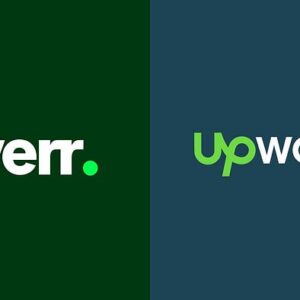Ever dreamt of waking up richer than when you went to bed? That’s the magic of passive income—earning without clocking in every day. But before you envision beaches and champagne, let’s get real. Passive income isn’t magic—it’s a smart blend of upfront effort, consistent systems, and sometimes capital. As Ramit Sethi so aptly notes, there’s no such thing as truly hands-off income—but once your systems are set, things hum along beautifully .
This ultimate guide will:
- Explain what passive income actually is.
- Highlight beginner-friendly streams.
- Compare key options in a clear table.
- Weave in real user stories and reviews.
- Offer step-by-step tips.
- Wrap with actionable conclusion to kick-start your journey.
What is Passive Income—and What It Isn’t
Many imagine passive income as sitting back and collecting cash, but in reality:
- It’s not your typical paycheck. It comes from systems or assets that generate earnings without daily sweat (investopedia.com, youtube.com).
- It’s not money for nothing. You put work or money upfront—then it pays continually .
- It can still require upkeep. Think book updates, course Q&A, rental repairs (entrepreneur.com).
Bottom line: passive income lets you trade upfront effort for ongoing returns. With the right setup, your efforts today continue paying tomorrow.
✅ Beginner-Friendly Passive Income Ideas
Here are beginner-oriented streams, ranked by simplicity, cost, and initial effort:
1. Dividend‑Paying Stocks & ETFs
- How it works: Buy shares that pay regular dividends.
- Why it’s good: Easy to start via brokerage; some yield 2–6% annual returns (reddit.com, financialsamurai.com).
- User insight: A Redditor recommends Vanguard index funds for low-cost, long-term returns (entrepreneur.com).
- Pros: Highly liquid; minimal upkeep.
- Cons: Requires capital; market swings possible.
2. Real Estate Investment Trusts (REITs)
- How it works: Buy into managed real-estate portfolios.
- Why it’s good: Yields ~4%, historically outperforming S&P 500 (investopedia.com).
- Pros: Real estate exposure without landlord headaches.
- Cons: Dividends taxed as ordinary income; fees apply.
3. Self‑Published E‑books
- How it works: Publish on platforms like Kindle Direct Publishing.
- Why it’s good: One-time effort, then passive income from sales (nerdwallet.com, investopedia.com, bankrate.com).
- Real income: UK author earning £100/month selling 100 copies (thesun.co.uk).
- Pros: Low cost, high scalability.
- Cons: Requires marketing to stand out.
4. Online Courses
- How it works: Build video/course content then sell on platforms.
- Why it’s good: Leverages professional expertise (investopedia.com, iwillteachyoutoberich.com).
- User tip: Samantha North notes: courses need marketing, maintenance (samanthanorth.com).
- Pros: High passive potential.
- Cons: Creation is time-consuming; need periodic updates.
5. Affiliate Marketing
- How it works: Promote products, earn commission per sale.
- Why it’s good: No own product. Just content + links. Reddit praises affiliate & Notion templates (investopedia.com, reddit.com).
- Pros: Scalable; low cost.
- Cons: SEO/content strategy needed; income fluctuates.
6. Dropshipping / Print‑on‑Demand
- How it works: Sell products online; third-party handles fulfillment (investopedia.com, shopify.com).
- Famous success: 24‑year‑old making £78K/month via dropshipping (thesun.ie).
- Pros: No inventory risk.
- Cons: Competitive; customer service still needed.
📊 Side‑by‑Side Comparison
| Passive Income Stream | Upfront Cost | Effort Level | Passive Potential | Risk Level | Typical Yield/Return |
|---|---|---|---|---|---|
| Dividend Stocks/ETFs | $$ | Low | High | Medium | 2–6% annually |
| REITs | $$ | Low | High | Medium | ~4% dividends |
| Self‑Published e‑book | $–$$ | Medium | Medium–High | Low–Med | £100+/mo (author dep.) |
| Online Courses | $$–$$$ | High | High | Medium | Varies widely |
| Affiliate Marketing | $–$$ | Medium | Medium | Medium | Varies widely |
| Dropshipping / Print‑on‑Demand | $$–$$$ | Medium–High | Medium | High | $1,500–$41,000/yr (shopify.com, nerdwallet.com) |
Note: Cost ratings: $ = low, $$$ = high initial investment.
🛠 How to Choose What’s Right for You
Start with this four-question checkpoint from Ramit Sethi (iwillteachyoutoberich.com):
- What are people already paying for?
- What skills do you have?
- Do others say you’re good at something?
- What brings you joy?
For instance, love writing? E‑books or affiliate blogging may be ideal. Prefer hands-off investing? Dividend ETFs or REITs fit nicely.
💡 Real‑World User Stories
Reddit user bkweathe on dividend investing:
“I invest 100% in total‑market, index‑based, low‑cost mutual funds…simple & inexpensive”.
Reddit entrepreneur on vending machines:
“With $2,000… place it in a busy location… earn $500 to $1,000 a month.”
UK The Sun article:
Renting a driveway via JustPark can earn £330/month, and wrapping your car could bring £166/month (the-sun.com, thesun.co.uk).
🔧 5 Practical Steps to Launch
- Select a primary stream aligned with your skills, capital, and interests.
- Validate demand—search trends, niche forums, or Amazon best-sellers.
- Build systems:
- Investments: automate contributions & reinvest.
- Courses/e-books: draft outline ➝ produce ➝ publish ➝ market.
- Affiliate: create content + SEO + promotion.
- Automate and delegate:
- Use tools: email funnels, scheduled social posts, VA support.
- Track & optimize monthly:
- Review analytics, reinvest earnings, reduce weak efforts.
🔍 SEO Best Practices Used
- H2 headings with keywords like “passive income streams”, “passive income ideas”, and “passive income for beginners”.
- Bullet lists and bold highlights for readability.
- Naturally embedded hyperlinks to authoritative sources for credibility.
- Clear structure, conversational tone, and no overload of jargon.
🤔 Common FAQs Answered
Is passive income a dream or reality?
It’s real—but takes upfront work. As Bankrate reminds: “You give the work upfront.” (investopedia.com, bankrate.com, samanthanorth.com)
Tax implications?
Depends on income type: dividends (capital gains), REITs (ordinary income), self-publishing (royalties). Keep records and consult an accountant .
How much can I make?
Varies widely:
- Dividend yield: 2–6% yearly.
- REITs: ~4% dividends .
- E-books, courses: £100–£78,000/mo in rare cases (iwillteachyoutoberich.com).
Is it truly passive?
No passive income stream is totally hands-off—but automation, delegation, and strategic upkeep make them close (iwillteachyoutoberich.com).
✅ Final Take & Action Plan
Passive income isn’t a pipe dream if you:
- Commit to upfront effort and learning.
- Choose a pathway aligned with your unique strengths.
- Build smart systems, automate, and iteratively optimize.
Start today by picking one stream—maybe dividend investing or writing a short e-book. Take it step by step. Track your progress. Iterate as you learn. Soon, you’ll wake up to earnings without punching a clock.
In the end, passive income isn’t about getting rich fast—it’s about building freedom, resilience, and long-term wealth. You’ve got this.
Thank you for sticking with this deep-dive! Let me know if you’d like me to expand any chapter, add worksheets, or craft content for your audience.







This Post Has One Comment